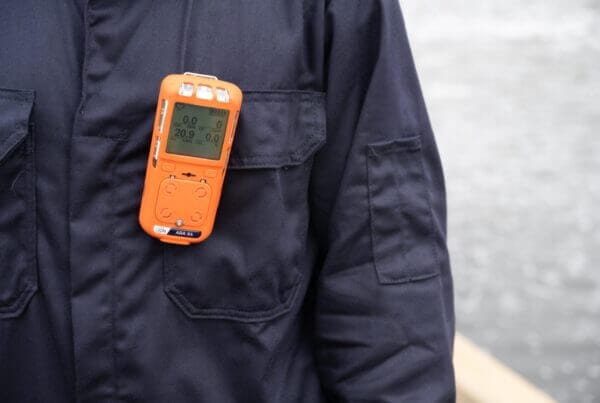
The Role of Gas Detection in Offshore Applications
Off-shore drilling is a highly hazardous process with dangers from complex equipment and harsh environments. Severe weather as well as toxic gases, including volatile organic compounds (VOCs) are all present during the extraction process.
Toxic gas emissions are a danger in the environments in which offshore applications are found. They create unsafe conditions for personnel from a poisoning and explosive perspective. This results in various long-term health issues, injuries and fatalities. The ignition of flammable gases or vapours can lead to fire and even sudden, normally fatal explosions.
Hydrocarbons, hydrogen sulphide, benzene and mercury vapour are a few of the gases that exist within offshore applications.
Hydrocarbons are a group of gases made up of Hydrogen and Carbon atoms. All of these gases are combustible and may be released under pressure from the well. Releases may also occur on the rig floor, around the vicinity of the test separator and about the choke manifold of an application.
Hydrogen sulphide is a toxic gas that occurs naturally as a contaminant in sour wells and is one of the most regulated in offshore applications. Concentrations often exist at the lowest points of rigs, such as the cellar deck.
Hydrogen sulphide is one of the most well-known and regulated of the toxic gasses, here are other substances which are not as widely regulated or considered to be of concern in offshore applications.
Benzene is another VOC and exposure to it has been associated with a range of acute and long-term adverse health effects. These include a range of illnesses from aplastic anaemia and cancer.
detection
Benzene evaporates easily and can be detected by its distinctive smell at concentrations between 2.5 and 5 parts per million.
Rather than having to rely on human senses in a workplace setting, it is advisable to use an appropriate form of quantitative monitoring. Legislation puts the onus on the employer to assess the risk and supply suitable protection. Remembering the adage attributed to Lord Kelvin that you can’t manage what you don’t measure. There are methods published by NIOSH in the USA that can be used to capture air samples for later analysis. Although this is a proven, reliable method of detection, this offers no real-time protection for the worker.
Real-time methods are always preferable and are achieved using various types of equipment. fixed systems are used for fence line applications. Hand-held devices are used for carrying out surveys and spot measurements. Personal monitors protect workers over an entire shift.
Mercury is a natural component in oil and gas and during drilling operations. It can accumulate in pipes and other processing equipment which is then cooled. The liquid mercury condenses within heat exchangers, separators, valves, and piping.
ION Science has over 30 years of experience in the oil and gas industry. It has developed a wide range of products for on and off-shore applications. All photoionisation products for detecting VOCs, hydrogen sulphide or benzene have fence electrode technology. This makes them highly resistant to the effects of humidity and contamination which are critical in harsh environments.
To learn more about our products for your offshore applications by contacting us on E: info@ionscience.com or T: +44 (0) 1763 208 503.







 United Kingdom
United Kingdom






